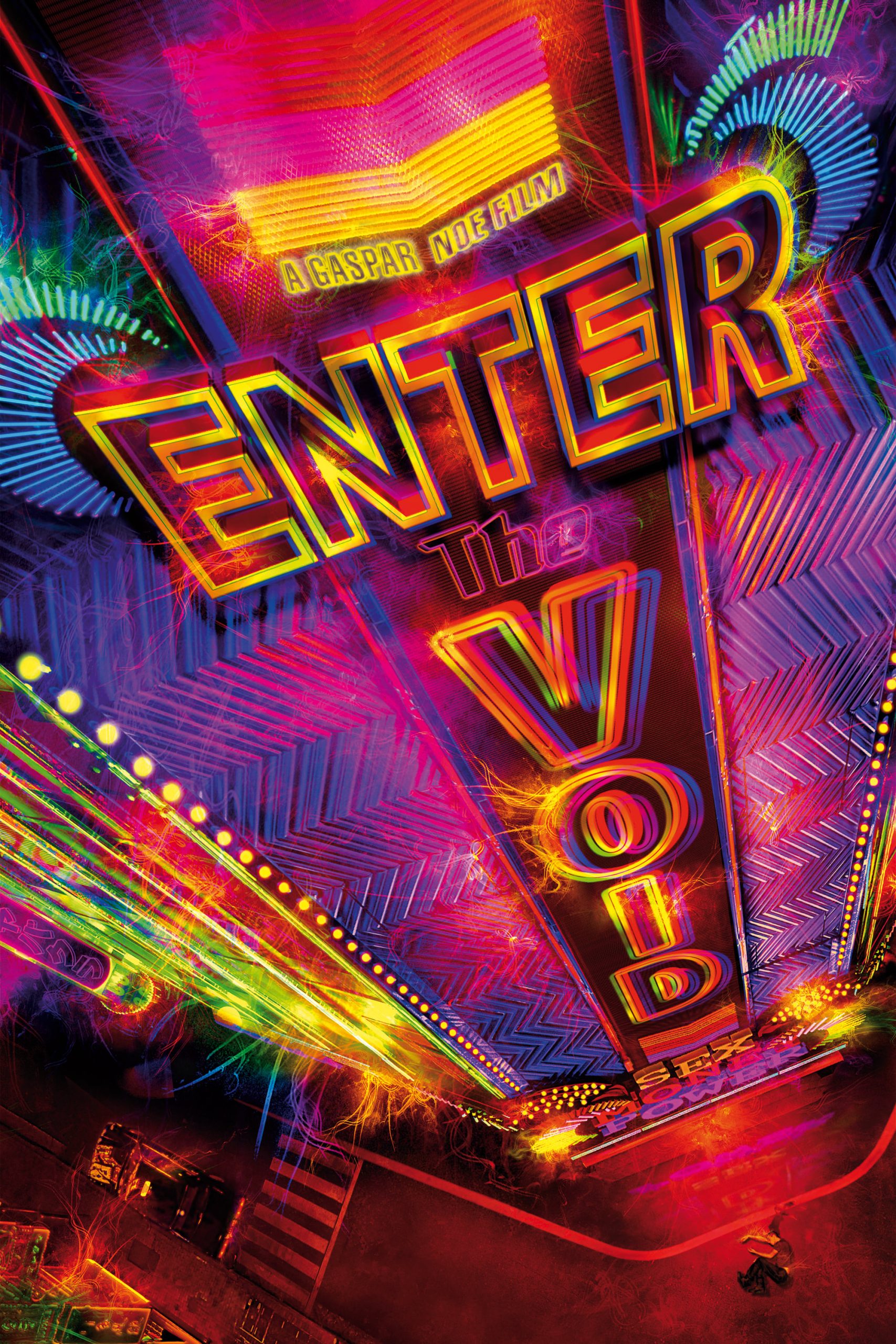
This psychedelic tour of life after death is seen entirely from the point of view of Oscar, a young American drug dealer and addict living in Tokyo with his prostitute sister, Linda. When Oscar is killed by police during a bust gone bad, his spirit journeys from the past -- where he sees his parents before their deaths -- to the present -- where he witnesses his own autopsy -- and then to the future, where he looks out for his sister from beyond the grave.
25 Nov Enter the Void (2009)
Tomorrow Never Knows
One of our next great filmmakers, yet another South American, makes a film about French filmmaking. That once great tradition was compromised in the sixties by a burst of non-sustainable creativity that ate itself. A decent enough metaphor is that cinema overdosed on introspective drugs. Now we get a film that both chronicles that rebirth and is the product of it.
It incidentally uses BUF, an incredibly inventive CGI house. It seems that some national film industries are being defined by a single house of visions. WETA in New Zealand is another example. BUF is behind the few things coming from France that are exciting.
The story, the way most people are accepting it, is simple enough. A young man dies and we watch what his soul experiences in the transition before he is reborn. Noe is bright enough to know that no matter how deep you choose to go, the thing should appear obvious to those who need it so. To those, he gives a few markers. Well actually there are only the death, the birth and some mention of the ‘Tibetan Book of the Dead’ which supposedly deals with this transition state.
This book itself is the victim of our need to simplify. Even the Western title is borrowed (from an Egyptian template).
But Noe has created something worth watching. He has imposed a couple techniques that help a lot. One is that our man when he dies is under the influence of a powerful hallucinogen, one supposedly created by the brain upon death, DMT (Death, Memory, Time). This allows us to accept and extend all the storytelling conventions we associate with tripping, including confused identity and spatial projection.
Consonant with this, but also independent is the relatively new trend of spatial cinematography. This, by itself is important enough for us to celebrate this. There are moments of old-style kaleidoscopic barrage. They work. But the new thing here is what I will call “French distance”. I first experienced it at the end of “Taxi Driver”, where our driver may have died and joined us in surveying the carnage while deciding whether to call it a victory or not.
It was an amazingly effective technique, in part because it was something cinematic that could never be seen in conventional theatrical staging/framing. Here, Noe/BUF take three dimensional navigation and vertical framing to an orgasmic extreme. It is pretty wonderful.
Now take these two devices and add in Noe’s other tendency: to dynamically shift the story from your supposition. He did that better than anyone in “Irreversible” where in playing the story backwards forces you to re-interpret a brutal rape (perhaps the most brutal ever filmed) as having never happened. We simply cannot do it because we are damaged from having gone through it.
This story has three characters. One is our man who dies. He is a split person, the other half we see as his “roommate”. This fellow, we learn in after-death flashbacks had a (natural) sexual desire for his mother, which became pathological and transferred to his sister through some events which we see.
The second character is an artist, which the filmmaker clearly identifies with and through whom communicates to us. He also is a split person with a “roommate.” The split is between the devices we see on screen, the story and the space. The roommate is literally building the miniature neon city we inhabit in the film. This is extremely clever and makes me have to stop writing for a while in appreciation.
The third character is the sister/mother. She is everything soft. In part she is defined by everything other than the hard surfaces of the environment. Unfortunately, we have to sign up to accept the South American women archetypes here, compliant nipples and vulva. (Fortunately we have the continental Spaniards Medem and Aldmodova to compensate.)
At any rate, we follow the trip of our lost soul, lost through desire for his sister. He dies. She has an abortion (another reason this isn’t for sensitive women). He chooses to be born in a limbo as that abortion’s ghost, as the price for a single moment of entering her. Her void into his void.
Posted in 2011
Ted’s Evaluation — 4 of 3: Every cineliterate person should experience this.


No Comments